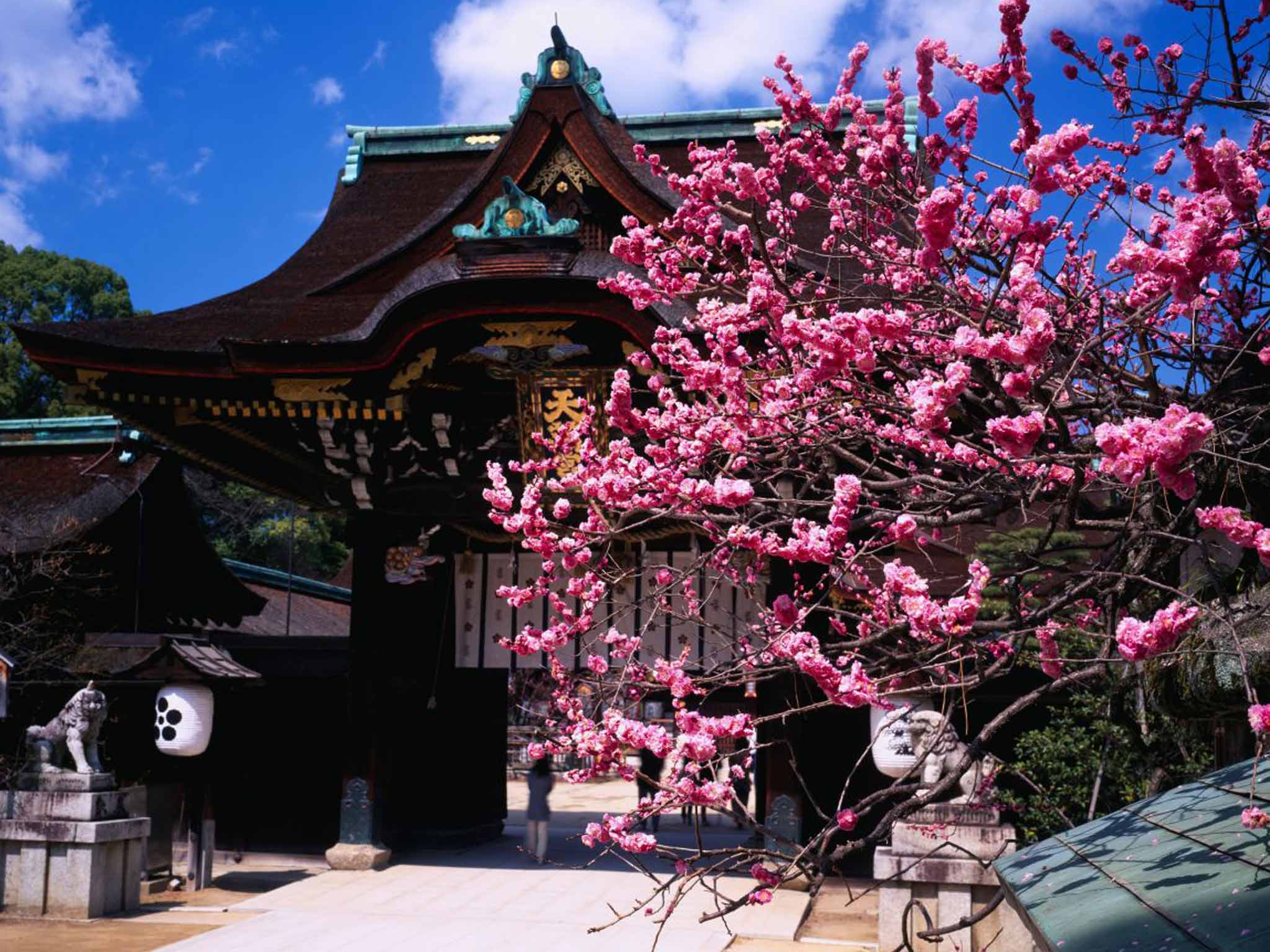The Independent's journalism is supported by our readers. When you purchase through links on our site, we may earn commission.
Japan in bloom: Cherry blossom is a big draw but it's plum that heralds spring
The first picnic of the year is traditionally held beneath the plum trees' blossom-laced branches – as long as the snow has melted

Cherry blossom is as synonymous with Japan as geishas and bullet trains. Sakura is the country's national flower, its arrival greeted each year with Springwatch-style fervour; it's the lavender fields of Provence, the tulips of Amsterdam and the American Fall rolled into one. One of the natural world's prettiest tourist attractions, it might not be in the same league as the Serengeti's wildebeest migration, but people flock from all over the world to see Japan's cherry blossom. This is 21st-century flower power. Consequently, hotels are full and prices soar.
The cheery spectacle rolls up the Japanese archipelago from Okinawa in the tropical south to Hokkaido in the north like a floral Mexican wave. Yet its fleetingly ephemeral nature, as clouds of petals flutter like confetti in the wind, seasons it with sadness – and makes timing crucial. Which is why, insomnia-crazed and neon-blind, I went a bit Bill Murray when I realised I was too early.
A Tokyo-based friend just laughed, however. “It's OK, you'll be here for the ume.”
Ume or plum, it turns out, is the new cherry. Bold, blowsy cherry blossom might have hogged the limelight for years, but it's plum, in fact, that heralds the arrival of spring in Japan. Plum trees flower in February and March – usually a month earlier than cherry. The first picnic of the year is traditionally held beneath the plum trees' blossom-laced branches – as long as the snow has melted. Before the cherry even has time to bud, plum gently breaks into bloom, preening its petals in the weak sun. The Japanese celebrate cherry's shy sibling, the Cinderella of trees, with plum festivals (ume matsuri) in parks and precincts of temples and shrines across the country.
To be honest, unless you're a fruit-tree nerd, one blossoming tree is as pretty as the next – although the plum is more fragrant than the cherry and its fruit more versatile. Plums are traditionally preserved in salt, but the sour, pickled umeboshi (sometimes served in bento boxes) is an acquired taste. They are also made into a sweet plum wine, umeshu, which is slightly more palatable.
The plum tree was brought to Japan from China in the eighth century and is believed to ward off danger, which is why you'll find it planted at the gates of religious temples and shrines. Apart from languishing in cherry's shadow, it's had other trials to contend with, most recently plum pox. A year ago in Ome City, outside Tokyo, all of Umeno Koen's (Plum Park) trees (around 3,000) were felled to stop an outbreak of the disease spreading. They will be replanted – but only after the area has been pox-free for three years.
Plum blossom can be seen in the parks that dot many of Japan's cities. In Tokyo, plum parties are held in Hanegi Park; in Kyoto the Kitano Tenmangu Shrine has 2,000 plum trees; while the Kairakuen Garden, an hour north of Tokyo by train, is a spectacular landscaped garden and blossom viewing site, with around 3,000 plum trees. The festival starts today and runs to the end of March.
Armed with a map, I headed first to Odawara, 45 minutes' drive south of Tokyo, where the festival was in full swing. Scouring the landscape for a tell-tale flash of pink, I eventually located the gently rolling parkland threaded with paths and pricked with blossoming trees. Traditional spring Koto music, tinny and tinkling, was piped on the air, while old men sprawled out on the grass under the branches with their picnics. Families wandered the paths, trying not to trip over camera tripods, children played on the grass, dogs were wheeled around in prams. Stalls under the trees sold baby ume trees and plum wine. Through the blossom-frilled branches I caught a glimpse of Mount Fuji, snow-capped in the distance. It felt like spring.
Later, I went in search of an urban ume experience. On the outskirts of Tokyo, the walled Koishikawa Korakuen Gardens were built in the 17th century. Paths snake around a small lake, past a tree-shaded wooden temple across an arched bridge to an ume grove with more than 100 red and white plum trees. Peaceful and pretty, it was full of amateur photographers trying to snap the perfect blossom shot.
Meanwhile, Yushima Tenjin Shrine was thronging with crowds. At its entrance was a mass of stalls selling souvenirs and plum-flavoured treats and around it, some 300 white ume trees in bloom. Outside, the ume festival was buzzing with performers and an open-air tea ceremony. I might have arrived too early for sakura, but cherry-blossom pilgrims are missing out on a spectacular secret.
Getting there
ANA (020-8762 8977; ana.co.jp), BA (0844 493 0787; ba.com) and Japan Airlines (0844 856 9700; uk.jal.com) fly from Heathrow to Tokyo's Narita airport. BA also flies to Tokyo Haneda.
More information
Subscribe to Independent Premium to bookmark this article
Want to bookmark your favourite articles and stories to read or reference later? Start your Independent Premium subscription today.

Join our commenting forum
Join thought-provoking conversations, follow other Independent readers and see their replies